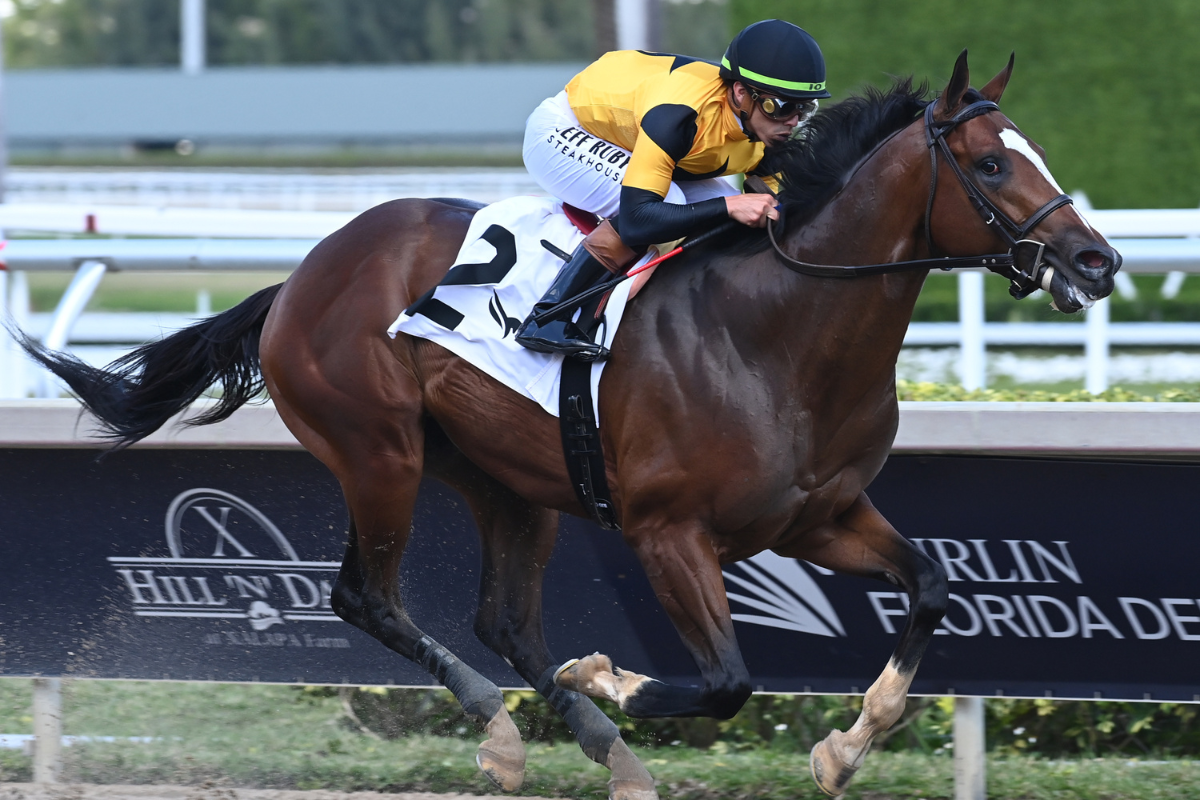

“Anyone watching the races should turn off their TVs now,” a message from PETA read as it threw light on the plight horses suffered this year at the Kentucky Derby. Started in 1875, every year the Churchill Downs has found that usual chatter as May approaches. But on the underbelly of a glamorous and “upper class” assembly of extravagant folks lie the sad reality of horses “who will publicly risk their lives for profit and entertainment”.
Watch What’s Trending Now!
We all saw it in 2023 when a staggering 12 horses perished in just two months since the stable opened on March 30 that year. An emergency meeting was called, folks brainstormed how things would change, and then a year later, the Kentucky Derby began with the usual allure, glam and glitz… Until the conversation went back to square one. Amid Sovereignty’s surprise win and Journalism’s second-place finish, not all news coming out of Louisville was positive.
When it was reported Sorcerer’s Silver was vanned off after the 3rd race at CD with injury to right foreleg, it scared a lot of people in the community. But as shocking as the injury news in an allowance race was, immediately after he went down, the three-year-old colt was rushed into the equine ambulance to Rood & Riddle Equine Hospital in Lexington for an arthrodesis surgery. Later, it emerged that he had sustained a fractured sesamoid, which can be difficult to repair, and in some cases, catastrophic, according to the veterinary department at UC Davis.
ADVERTISEMENT
In the past, the only probable outcome was euthanasia. But Sorcerer’s Silver was in luck. On May 4, shelter veterinarian Bryan Langlois reported on X in a lengthy post: “Without going into tons of detail on this…the type of fracture to the sesamoid bone of the fetlock in this case has affected the ability of the entire joint to remain stable and support the weight of that leg. Not being able to do so will cause the whole joint to ‘sink’ downward and, while of course causing great discomfort, will also greatly predispose the horse to developing laminitis in that hoof (and possibly others). This used to mean that there really was no other choice but humane euthanasia in these cases. Thanks to the pioneering work of Dr. Larry Bramlage, now the arthrodesis can be done in some of these cases to save the horses life.”
“What is done (in simplistic terms) is that the joint has all of the cartilage and other material in the joint space What makes motion of the joint pain free and possible) removed and packed with bone graft material (usually taking from the marrow of another bone). This will cause the joint to become one solid bone instead of a joint. A whole bunch of screws, wires, and 2 bone plates are also added to “hold” the joint in the desired position while the bone marrow graft has time to set and cause fusion of the entire joint. The positioning of the joint during this time is crucial and why all the other hardware is needed. If everything goes smoothly, the joint fuses in a fairly normal position allowing for the horse to walk mostly normally on the leg without any issues,” the post further noted.
Notably, the sesamoid bones sit at the back of the fetlock (the “ankle” of a horse), and it’s what gives range of motion and support to the foot. But because of their positioning and general horse anatomy, along with the high speeds racehorses are pushed to, these bones can easily break from the pressure. They can also break from overextension, where the fetlock extends to the point where the sesamoid bones make contact with the ground.
ADVERTISEMENT
The surgery is just the start, really — those months following the operation are super important, and the horse needs to steer clear of any complications to make a full recovery. For Sorceror’s Silver, for whom this injury could’ve been fatal even a few years ago, it’s nothing but good news.
It was announced that "Sorcerer's Silver" suffered a fractured sesamoid bone during the running of the 3rd race Saturday at Churchill Downs and was being sent to Rood and Riddle to have an arthrodesis surgery done on the fetlock. For those wondering, this is a surgery that… pic.twitter.com/zrIl9xktVb
— Bryan Langlois, DVM (@Animalsheltrdoc) May 5, 2025
ADVERTISEMENT
However, the Kentucky Derby track has faced a lot of scrutiny over the years regarding its safety standards.
Concerns piling up over the Kentucky Derby racecourse
In 2023, there were twelve horse fatalities at Churchill Downs during the Kentucky Derby period, which included some incidents that happened during races and training sessions. So, after those deaths, the Kentucky Horse Racing Commission and the Horseracing Integrity and Safety Authority (HISA) jumped in to investigate.
ADVERTISEMENT
This resulted in racing being put on hold at Churchill Downs, and they decided to move the spring-summer meet over to Ellis Park Race Course in Henderson, Kentucky, while they took a closer look at safety measures.
According to various reports, the racing-related equine fatalities at tracks HISA oversees were at a rate of 1.23 per 1,000 starts in 2023. So, it turns out this was a bit lower than what The Jockey Club reported nationally, which was 1.25 in 2022 and 1.32 in 2023. About this decrease, HISA CEO Lisa Lazarus mentioned, “HISA’s most important goal is driving down equine fatalities. The reduction in the rate of equine fatalities at tracks under our jurisdiction demonstrates that setting high standards for racetrack safety and anti-doping and medication control across the country makes Thoroughbred racing safer.”
Top Stories
NFL Announces Punishment for Shedeur Sanders Incident

Ex-NFL GM Tore Up Antonio Brown’s Contract & Nullified Guarantees After Wild Helicopter Incident

NFL Announces Final Punishment Decision for Patrick Mahomes Incident Against Texans

Pro Suffers Disqualification at PGA Tour Q-School After Several Players Withdrew Abruptly

NFL Announces Punishment For Jared Goff Incident After Verdict on Cowboys Star

Respect Pours In for Shaquille O’Neal, Charles Barkley After $200,000 Announcement

So, the horse racing industry has really stepped up its game by putting in place a bunch of safety measures, like better track equipment and tighter veterinary checks. Thanks to these efforts, we’ve seen a 27% decrease in fatalities at regulated tracks by 2024.
ADVERTISEMENT
ADVERTISEMENT
ADVERTISEMENT
ADVERTISEMENT

